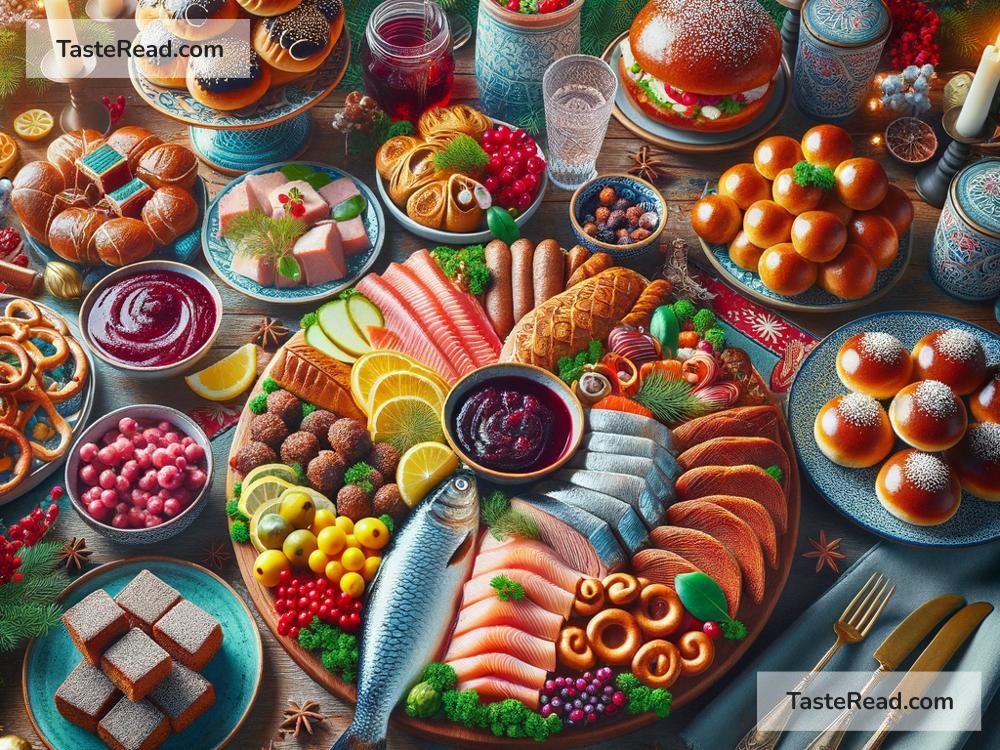Festive Swedish Smorgasbord Traditions for the Holidays
When it comes to celebrating the holidays in Sweden, food plays a central role. One of the most cherished traditions is the “smorgasbord.” The word “smorgasbord” refers to a large, buffet-style meal with many dishes, offering a variety of flavors to suit every taste. During the holidays, this tradition becomes even more special as families and friends gather to enjoy a festive version of the smorgasbord known as the Julbord, or Christmas table. It’s filled with delicious seasonal foods that reflect Sweden’s rich culinary heritage.
A History of Smorgasbord
The smorgasbord has roots in Swedish culture dating back hundreds of years. Originally, it started as a meal in the 16th century where guests would snack on small dishes before the main feast. Over time, it evolved into a full buffet, showcasing different types of food, from cold dishes to hot ones. Today, the holiday smorgasbord is a much-loved tradition, offering a glimpse into Swedish customs and a chance to savor comforting, flavorful meals.
The Magic of the Julbord
The holiday smorgasbord, or Julbord, is the centerpiece of Swedish Christmas celebrations. It’s typically enjoyed on Christmas Eve, which is more significant than Christmas Day in Sweden. Families prepare and serve an impressive spread of food, often sharing in the cooking and baking. The Julbord isn’t just a meal—it’s an experience, a time for togetherness, laughter, and enjoying long-standing traditions.
What’s on the Julbord?
The Julbord is made up of several courses, with each plate offering something unique. The meal is organized into sections, and Swedes often serve themselves in stages to sample a little bit of everything. Here’s a look at what you can usually find on a traditional Swedish Julbord:
1. Cold Fish Dishes
Fish is an essential part of Swedish holiday traditions, and pickled herring (known as “sill”) is one of the stars of the Julbord. There are often several types of herring, flavored with mustard, onions, herbs, or other marinades. Smoked salmon, gravlax (cured salmon), and eel are also popular choices. These cold fish dishes are typically enjoyed with boiled potatoes, dill, and a dollop of sour cream.
2. Meat Dishes
Swedes love their traditional meats, and the Julbord is no exception. Central to the meal are Christmas ham (“julskinka”), often served cold or baked with a mustard glaze. Meatballs (“köttbullar”), sausages (“prinskorv”), and liver pâté are also staples. Some Julbords include roasted pork or beef, as well as cured meats like salami.
3. Warm Casseroles
Warm, hearty casseroles are the perfect winter comfort food. Two of the most iconic dishes served on the Julbord are Jansson’s Temptation (“Janssons frestelse”) and potato gratin. Jansson’s Temptation is a creamy potato dish baked with onions and pickled anchovies—though its rich, savory flavor often wins over even those who don’t usually love anchovies. There’s also “lutfisk,” a dried and soaked cod dish, which is served warm with butter or mustard sauce.
4. Cheese and Bread
Cheese is a must on the Julbord. Swedish cheeses, such as Västerbotten or Prästost, are often offered alongside hearty, rye-based bread and crispbread (“knäckebröd”). Butter and other spreads complete the selection, adding layers of flavor to the meal. Small, aromatic rolls called “vörtbröd” are particularly popular during Christmas and include spices like cloves and cinnamon.
5. Side Dishes and Salads
No festive smorgasbord is complete without an array of side dishes. Beet salad and pickled vegetables like cucumbers add bright colors and fresh flavors. Rice pudding (known as “risgrynsgröt”) is another iconic Julbord dish—it’s often eaten as dessert or enjoyed as a side with sugar and cinnamon. Some families even hide an almond in the rice pudding: whoever finds it gets good luck for the year!
6. Sweets and Treats
Swedish Christmas wouldn’t feel complete without traditional sweets. Gingerbread cookies (“pepparkakor”) and saffron buns (“lussekatter”) are holiday favorites. Saffron buns, bright yellow rolls flavored with saffron and dotted with raisins, are often enjoyed during Advent and on St. Lucia’s Day, but they also make their way onto the Julbord. Other desserts might include chocolates, marzipan, and fruit.
7. Drinks
Traditional drinks round off the Julbord. Glögg, a spiced mulled wine, is a holiday favorite, served warm with raisins and almonds. Beer and a special Swedish holiday soda called “julmust” are often the beverages of choice. Aquavit, a flavored Scandinavian spirit, is also common, enjoyed alongside hearty dishes.
A Time for Togetherness
The Swedish smorgasbord is more than just food—it’s about sharing moments with loved ones. Families often prepare and enjoy the meal together, singing carols or telling stories. Some households inject a bit of humor and cheer by dressing up as Santa Claus (“Jultomten”) and delivering gifts to children after the meal.
Thanks to its variety, the Julbord invites everyone to join in and find something they love. Whether it’s the salty tang of pickled herring, the savory warmth of Jansson’s Temptation, or the sweetness of saffron buns, there’s a dish for every palate. It’s a wonderful way to celebrate the holidays, bringing traditions to life through meaningful recipes and shared memories.
Keeping the Tradition Alive
Today, the Julbord tradition thrives in Sweden and beyond. Many restaurants offer holiday smorgasbord buffets, giving both locals and visitors the opportunity to experience this festive feast. Swedes living abroad often create their own Julbord spreads to stay connected to their heritage. No matter where it’s enjoyed, the Swedish smorgasbord remains a heartwarming expression of holiday cheer.
If you ever get the chance to experience a Swedish Julbord, don’t hesitate to dive in. Grab a plate, sample the dishes, and immerse yourself in one of Sweden’s most delicious holiday traditions!


